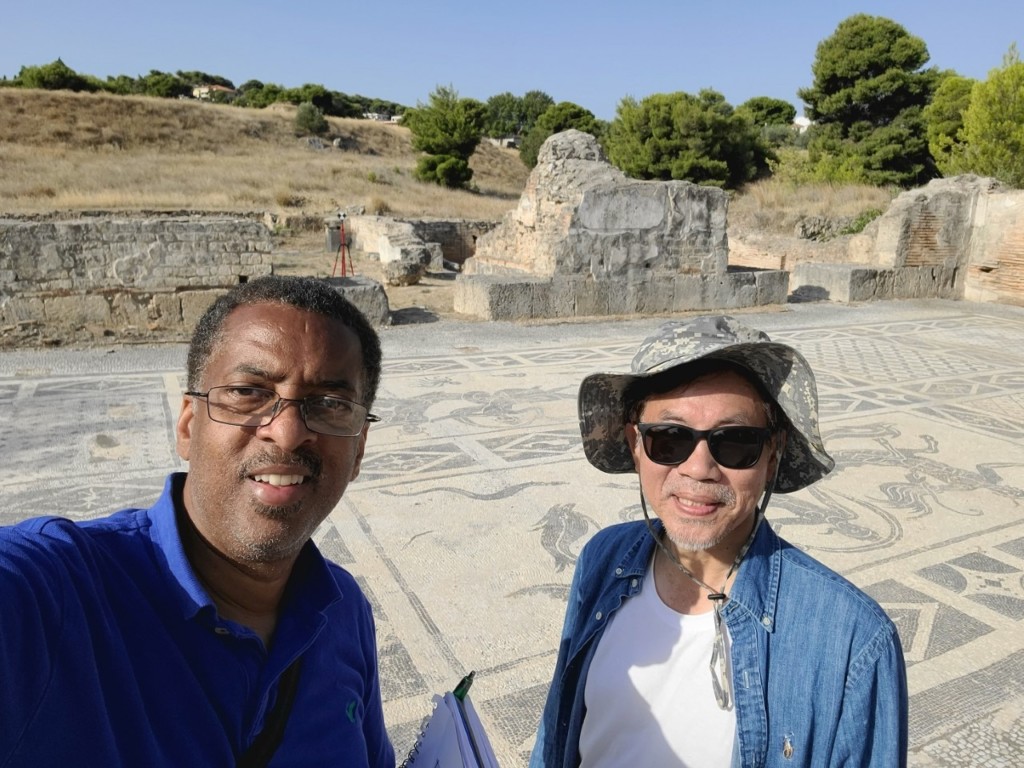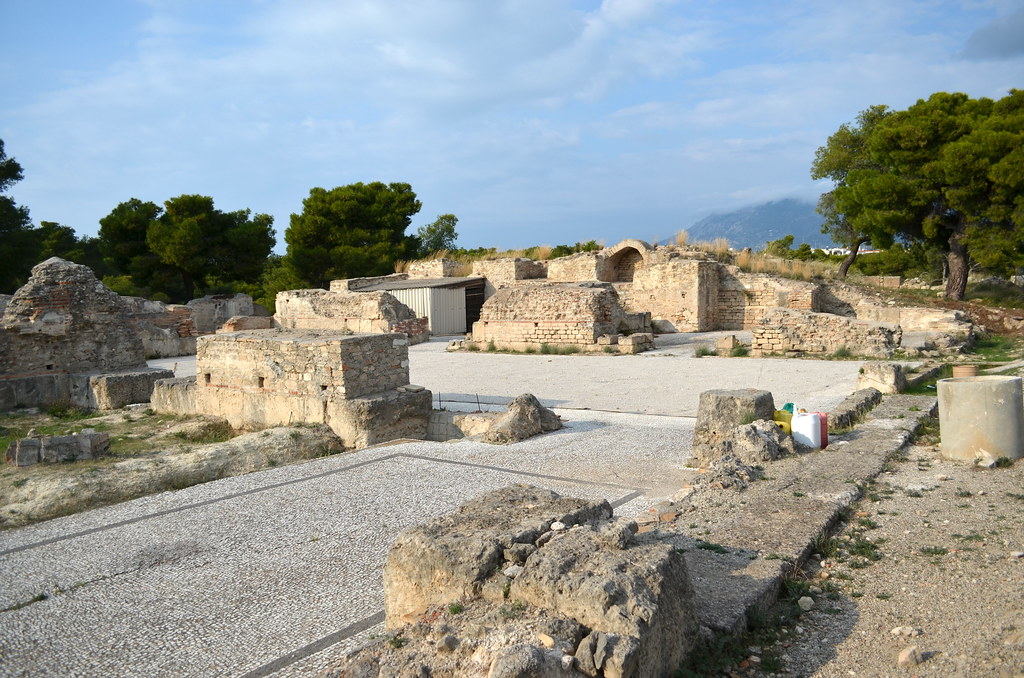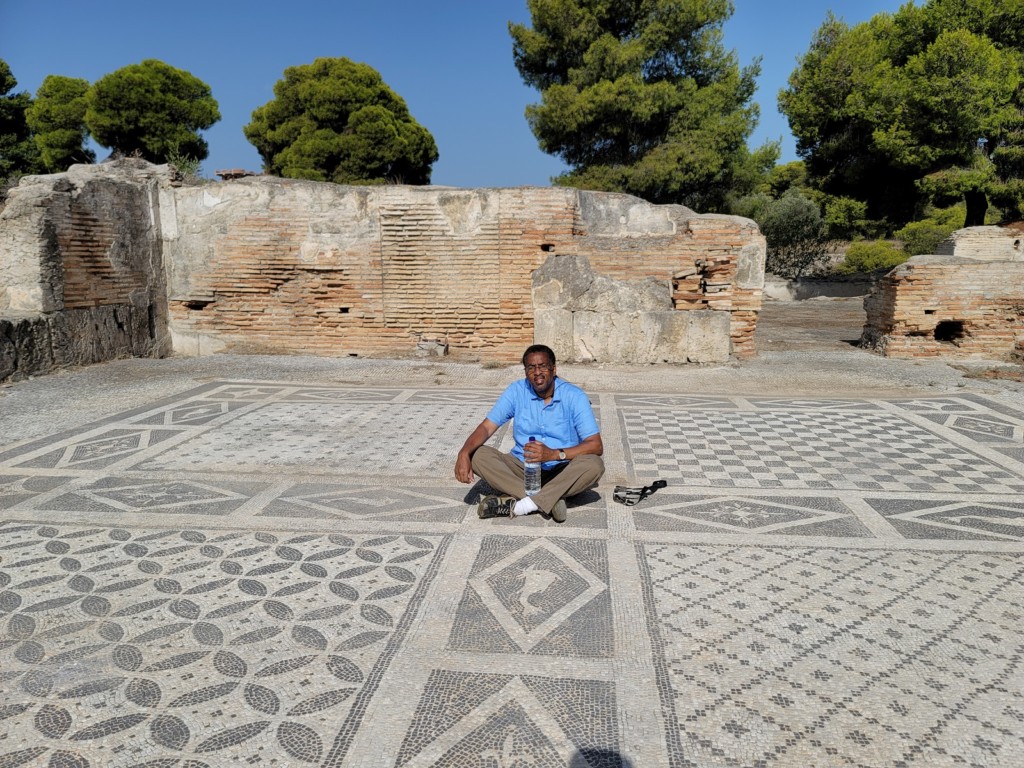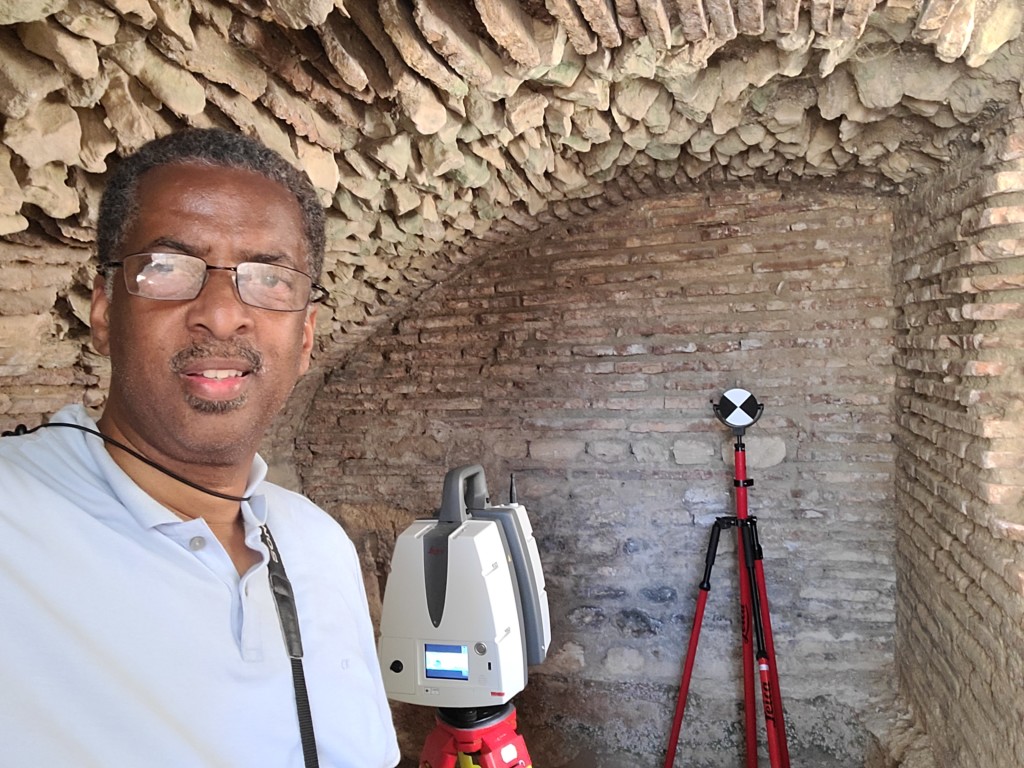PRAIRIE VIEW, Texas (November 10, 2021) – William Batson was a master’s degree candidate at Ohio State University when he first visited Isthmia, Greece. Twenty-six years later, the Prairie View A&M University School of Architecture (SOA) associate professor returned to Greece, joined by Yunsik Song, director of the SOA’s Fabrication Center. In tow, PVAMU’s state-of-the-art 3D laser scanner.
The trip was something of a personal milestone for Batson, which requires some explanation. For the university, it represented the 21st site visit for the architecture program since acquiring the 3D laser scan and equipment in 2016. “Before, architects would have to measure with a tape measure,” Batson said. “Our P-40 Leica 3D laser scanner is state-of-the-art technology for field measurements and archival and historic preservation drawings. It scans 1,000 feet in diameter and 1,000 feet vertically, with accuracy within .003.”
The equipment is generally used by construction and engineering firms. Some police departments even use it to reconstruct crime scenes. PVAMU is one of the few institutions of higher education to own one.
Putting the Equipment to Good Use
The site at Isthmia, Greece dates from the second century AD: a Greco-Roman bath surrounded only the foundation stones in situ and missing the original roof structure. Batson and Song utilized the 3D laser scanner to scan not just the site of the bath but other nearby structures dating from the same period.
After “stitching” together the laser scans, they plan to recreate the most accurate digital reconstructing of the bath as it appeared 2,000 years ago. “There’s a bath in Libya and another in Pompeii,” Batson said. “These additional ancient bath sites give clues to the roofing, construction methods, size and shape.”
Batson characterized the trip as a great success: “We achieved 42 perfect 3D scans and 44 perfect targets.”
A Decades-old Foundation
Now, about the bath.
As a student in Isthmia in 1995, as part of the Ohio State excavation, Batson helped level panels of tesserae that make up the bath’s 35-foot by 85-foot-long monochrome mosaic. The excavation was led by Timothy Gregory, the head, then, of OSU’s Excavation in Isthmia. At the time, Batson was the only team member who knew AutoCAD, which was at the cutting-edge of technology in architecture. “They needed drawings, and archeologists aren’t necessarily trained in drawing,” Batson explained. “I told Dr. Gregory that I was going to complete a re-creation of the bath that was credible.”
But the two lost touch after Batson received his degrees and left Ohio. Gregory eventually stepped down. In the meantime, one of Batson’s roommates during the 1995 OSU Excavation, Jon Frey, currently director of the Michigan State University Excavations at Isthmia, transferred the Excavation from OSU to MSU. Frey invited Batson back to the site this year, hoping to assist with completed drawings of the bath to accompany the final publication.
Batson, of course, was happy to return, having presented a paper in Athens, Greece, in December 2009 at the 7th International Conference on History: From Ancient to Modern: “Reconstructing the 2nd c. Greco-Roman Bath at Isthmia, Greece.” “Call it a lifelong interest or a dream deferred, I will help make good on my long-ago promise,” Batson said.
A Lasting Impact
Batson and Song volunteered their work for the Isthmia project, as well as many others, in the seven years since they co-wrote the grant that brought the equipment to PVAMU. Some of the most meaningful projects have included the 4th Ward Community Center Development Center, Cane River Creole National Park-African Slave Cabins and Freedman’s Town, as well as a high-profile international project that saw a PVAMU team, including eight students, in Nepal in July 2017, performing scanning of temples damaged in a 2015 earthquake for UNESCO, the United Nations Educational, Scientific and Cultural Organization.
Of the Isthmia site, Song said, “We will be able to reconstruct the site digitally, and as a result, Prairie View students will better understand Greco-Roman architectural typology. It’s a really unique typology, and they’ll understand the influence of Roman architecture and the foundation of the original Greek architecture. Scanning these sites as an educational resource is why we are very excited to be involved with the project.”
Batson noted that as director of the Community Urban Rural Enhancement Service Center, “It’s part of my job to find meaningful work for students. Documenting historical sites and structures has real-world benefits and a valuable skill set for our students, especially in the 21st century, and provides an accurate record of our history, culture, heritage and legacy that carries on forever.”
By Andrew Cohen
-PVAMU-




